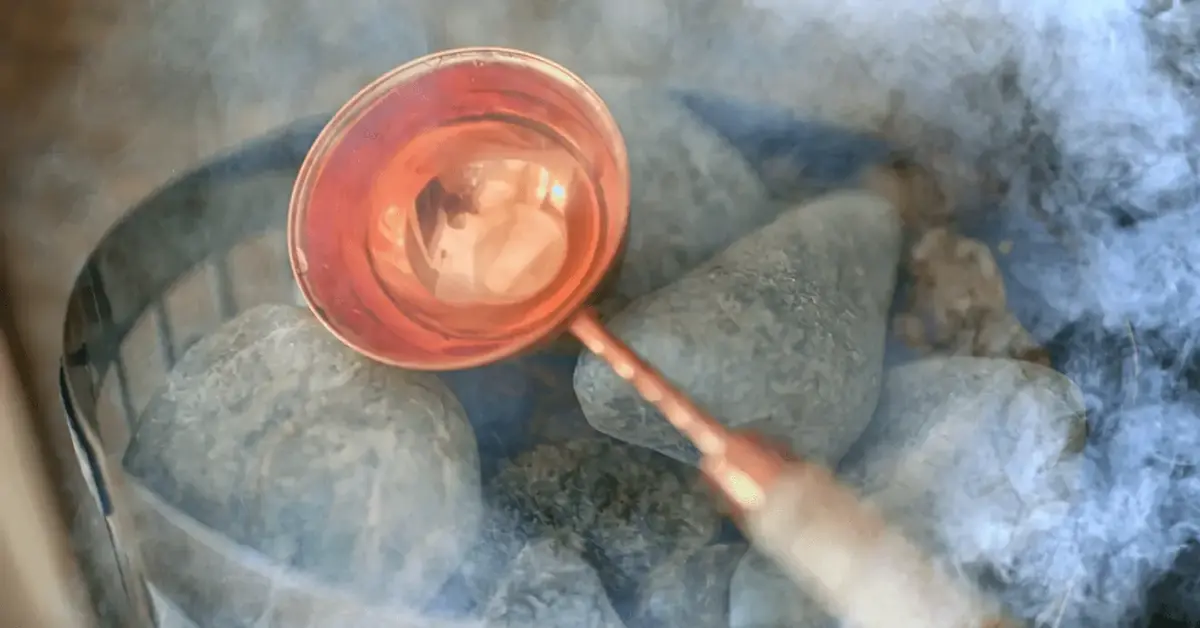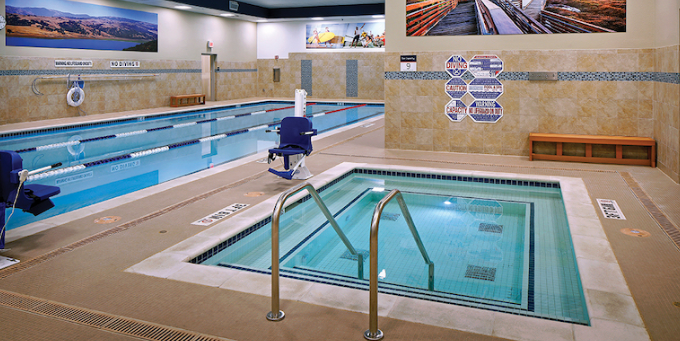Replace the sauna stones if you observe that it takes longer to achieve the proper temperature, that the steam becomes weaker when you pour water over them, or that little pieces are falling off of them. My sauna heats up faster and the steam is now more powerful and enjoyable after I replaced my stones. This was a noticeable improvement. My entire experience in the sauna felt renewed with a minor adjustment.
To assist you in maintaining the best possible condition for your heater, Sauna Experts has put together answers to four commonly asked issues concerning sauna stones. It will be efficient and enjoyable to use the sauna if you follow our advice. Finally, worn-out stones shouldn’t get in the way of your ideal sauna experience, which you deserve.
Table of Contents
How do you know it’s time to replace sauna stones?
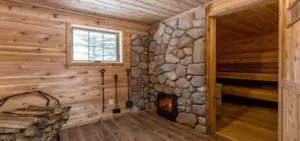
Every sauna user should be able to tell when to replace the rocks in their sauna; it’s a simple process. These four pointers will help you decide when new stones are needed to protect your heater and get the most out of your sauna experience!
One of the most important maintenance duties (next only to cleaning) is to regularly inspect and replace the sauna stones. Sauna stones decay with time and can cause problems for your heater, increasing its thermal load, wasting energy, lowering air quality, and making a mess if they are not serviced. Heaters that burn wood or electricity both need regular stone maintenance.
Your frequency of sauna use will determine how often you need to perform this maintenance. Based on my investigation into the durability and lifespan of sauna stones, I’ve discovered that commercially manufactured bathhouse stones ought to endure for a few years, if you use your sauna for roughly two hours per week.
But it’s best to give them an annual inspection. However, maintenance needs to be done on commercial saunas that are used daily at least once every three months. Although the kind of stone can affect how long it lasts, usage patterns have a far bigger effect on how frequently maintenance is required.
What signs show up in worn-out sauna stones?
Aging sauna stones can be easily identified by variations in color. Stones can change from dark grey to reddish brown, white, or even greenish as they dissolve. Furthermore, there may be stone fragments on the ground in front of the heater, which suggests that some of the stones have cracked or broken into pieces.
Gently tapping two stones together will reveal the state of your thermal stones. For best results and safety, stones that chip, break, or sound empty should be thrown out and replaced with fresh ones. In a cedar and stone sauna, the strong and heat-retaining qualities of sauna stones are combined with the organic warmth and visual attraction of cedar wood.
Why should you replace your sauna’s stones?
Excellent stones are necessary for a true sauna experience. The unique “löyly“—a spray of hot steam that heightens the atmosphere of the sauna—is produced when water is sprayed over the heated stones. A poor quality “löyly” might result from old or damaged rocks lowering the steam’s quality.
Furthermore, damaged stones may affect the sauna’s air quality, harm the heating components, and waste energy—an important consideration when trying to cut energy expenses. Sauna stones should be examined and changed every one to two years, based on how often they are used, to ensure maximum performance and enjoyment.
How to examine stones in saunas?
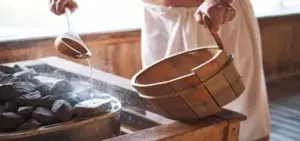
Stone sauna spa maintenance is simple and ought to be done at least once a year. More frequent inspections are advised if you discover pieces of cracked stone under your heater. First, make sure the heater is off and fully cool. After that, take out every stone from the heater. This work may take longer than expected, particularly if you have warmers like the Harvia Cilindro or Harvia Legend that can hold a lot of stones.
To get the finest sauna löyly and guarantee a safe sauna session, well-maintained and clean stones are essential. Examining the heater’s parts is another advantage of removing the stones. It may be time to replace the heater or check the usage instructions to make sure it is operating correctly if you see a color change or scale build on the heating elements or frame. After that, throw away any stones that have discolored or broken.
If you want to recycle them, make sure you follow the local regulations. If not, consider using them in your yard. Tap the stones together to see how strong they are; this can help you spot stones that are beginning to break down. Broken stones should be removed from the heater since they have the potential to settle into tiny spaces and pack the stones too tightly. This prevents airflow, which causes the heater elements to overheat and the sauna to heat more slowly.
4 clues that it’s time to replace the stone

It is crucial to perform both touch and visual examinations on your sauna stones. To decide if a stone needs to be thrown away, consider the following:
- Chipped or shattered Stones: It is time to replace a stone that is broken or cracked into fragments.
- Stones that have changed color—especially on the uppermost layer—should be thrown away if they have turned grey, white, green, black, or any other strange color. Mineral build-up from steam is frequently the cause of this discoloration.
- Impact Breakage: Tap the stones lightly against one another. A stone is showing signs of degradation if it fractures or fractures readily. Start slowly and add more power to confirm if needed.
- Feeling Fragile or Hollow: Stones that give off a fragile or empty feeling when tapped on another stone should be taken out of service.
Why not gather sauna stones yourself from the natural world?

At Harvia, each sauna stone is carefully chosen, examined, and verified by professionals before being approved by the Finnish Geological Survey as safe and optimal for sauna use. In contrast to numerous naturally occurring stones that may harbor toxic substances or be unable to withstand major temperature variations, our stones go through a thorough testing and quality control process.
For those who are not skilled in recognizing appropriate stone kinds, finding naturally secure and strong stones can be difficult and requires specialized knowledge and controlled testing. At Harvia, we’re dedicated to giving you stones that improve energy efficiency and provide you with an exceptional sauna experience. But soon, every stone will decay. We thus advise checking and caring for your sauna stones on an annual basis, or more often if you notice small pieces or dust building up under your sauna burner.
What kind of stones are used in heaters for saunas?

Heat conductivity, size, and form are the three main attributes of premium sauna stones. Vulcanite Sauna Stones or Grade A Finnish Olivine Diabase, also known as Stones are excellent options for any electrical or wood-burning bath heater. Generally, sauna stones come in two sizes: 5 to 10 cm and 10 to 15 cm. Selecting the appropriate size for your heater is crucial. Smaller stones (5 to 10 cm) work best with electrical heaters, while bigger ones (10 to 15 cm) work best with wood-burning heaters.
It may seem interesting to use stones found in nature for your sauna heater, but you shouldn’t use any old stones. Unique sauna stones, such as Vulcanite or Finnish Olivine Diabase, have a high metal content and can withstand the intense heat and humidity of the sauna. Common stones are dangerous and can explode, breaking easily and harming the heating components.
Specialized stone alternatives are available for people who want their bathhouse to seem beautiful and polished. These consist of smooth, spherical stones that have a softer, more refined appearance and feel. You can give your heater a clean finish with cover stones, like round Finnish Olivine Diabase or white clay cover stones, which will go well with the overall sauna wellness mood.
How to change the stones in your sauna?
You need to follow these simple procedures to change the stones in your sauna:
- Switch Off the Heater: Verify that the sauna heater has cooled down and is fully off.
- Remove Old Stones: To protect your hands, put on gloves. Remove the ancient stones from the burner with care. Broken or worn-out stones should be disposed of properly.
- Clean the Heater: Take advantage of this chance to give the heater a thorough cleaning, being sure to get rid of all the dirt and dust within.
- Insert New Stones: Insert fresh sauna stones into the heater, making sure they fit uniformly and tightly.
- Test and Warm Up: After swapping out the old stones, turn on the sauna heater to make sure the replacements are heating up correctly.
You can maintain the functionality of your sauna and improve your experience by changing the rocks in your sauna safely and efficiently by following these procedures.
What happens if the stove’s stones are not regularly replaced?
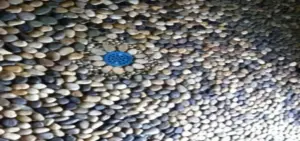
The lifespan of the heater is directly impacted by the state of the stones inside. By keeping the stones in good shape, you can make sure the heater works well and lasts for a long time. Stones used in saunas could break down and settle, possibly pressing up against electric heater components.
Stone particles and dirt buildup at the heater’s base can cause rust and other possible problems, such as corrosion that may weaken the heater’s structural integrity. Because damaging stones take longer to heat up and require longer heating cycles, they can raise the amount of electricity used by electric heaters. Optimizing heater performance and reducing maintenance costs require routine stone inspections and replacements.
How should old sauna stove stones be used?
Since sauna stones are naturally occurring, it is ideal to restore them to their original environment. You can use them to decorate the outside of your house or as a border for flowerbeds.
Wrapping up
If sauna stones begin to crumble, discolor, or crack, it’s time to replace them because this could negatively affect the heater’s performance and the standard of the steam. Consistent replacement, usually every one to two years, depending on usage, guarantees an effective and pleasurable sauna session while preserving energy economy and air purity.

